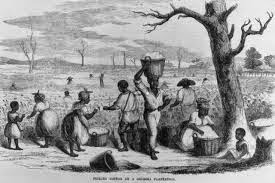Hypocrisy and Early America
The distinction
between the United States slave society and the Roman’s was clear from the very
beginning of Professor Satterfield and Professor McKinney’s joint lecture. The Roman slaves were not only educated but
many were educators themselves whom helped rear the youth of these societies. They were also doctors, secretaries, and
philosophers. While the Roman Slaves
were still considered property and their freedoms were restricted, they had
certain privileges within society and could even integrate and become Roman
citizens once they had bought and obtained their freedom. [1]To
say the American South was a vastly different slave society would be
underselling just how ridiculous and sadly powerful the slave intuition was. The thought of integrating slaves into
mainstream society would have been considered a radical idea. So much so that
segregation was the law of the land well into the 20th century. Slaves being able to read and write were
dangerous and susceptible to revolt. It
was prudent for owners to constantly monitor dangerous behavior. Religion among the devout southern Christians
was skewed so as to conform to the institution of slavery.[2] Contrasting the two societies even further it
becomes apparent how drastically different American slavery was to Ancient Rome
when discussing the American Revolution.
The Colonial’s fought for their rights against the British Empire while
simultaneously excluding their slaves from those same fundamental rights.
The
American Revolution does not happen if George Washington, Thomas Jefferson,
James Madison, and the other Founding Fathers of the United States are laborers
who would have to work their own lands.[3] Instead they were each given the economic
freedom necessary to discuss and congregate the empirical rule of the British.
“We hold these truths to be self-evident, that all
men are created equal, that they are endowed by their Creator with certain
unalienable Rights, that among these are Life, Liberty and the pursuit of
Happiness”[4]
The Declaration of Independence was
obviously not a declaration for ALL men, as slavery did not “officially” end
for another century after the Revolutionary War. The
diction and rhetoric were in stark contrast with the reality of slave life. How could the colonialist write and support
such a statement while at the same time oppressing and limiting the freedom of
their slaves? To say it is not okay for
the British to impose “taxation without representation” and to simultaneously deny
slaves the right to choose who they can and cannot marry is the height of
absurdity. The Revolutionary War offered
slaves and ex-slaves a chance to use their oppressive society own words against
them,
“we have in common with all other men a naturel right
to our freedoms without Being depriv’d of them by our fellow men as we are a
freeborn pepel and have never forfeited this Blessing by aney compact or
agreement whatever[5]
The colonials having their own logic
used against them, combined with the very real threat of slaves fighting
alongside the British forced some colonies like Massachusetts to dissolve
slavery and to allow slaves to “earn” their freedom if they fought alongside
the revolutionaries.[6] It
was small step, but a step nonetheless in some areas as slaves could
potentially earn their freedom.
The
Constitution is full of hypocrisy that shaped the early stages of American
History. David Waldstreicher noted that
six of the American Constitutions clauses directly relate to slavery and their
owners.[7] Yet famously the word slavery is never used
or mentioned. The founding fathers were
complicated individuals with mixed emotions on the topic of slavery. It is clear at a fundamental level that they
felt it was morally wrong or “slavery” would have been outright mentioned by
name. At the same time, clauses such as
the three-fifths clause gave a great incentive for the southern slave owners to
add more slaves, as it meant more power for the South within the American
government.
“Africans and their descendants were not being
defined as three-fifths of a person, as is sometimes said, for that would have
implied that the men among them deserved three fifths of a vote, when they had
none, or had three-fifths of a person’s rights before the law, when they had
much less than that”[8]
Slaves were being counted as a part of
the population. Yet they had no right to
vote or lobby within this supposed democratic society as they were slaves. The United States had just fought for this
very freedom against the British. The
absurdity of being counted among the population but not having any of the
right’s promised to every other American citizen was truly the peak of early
American hypocrisy.
